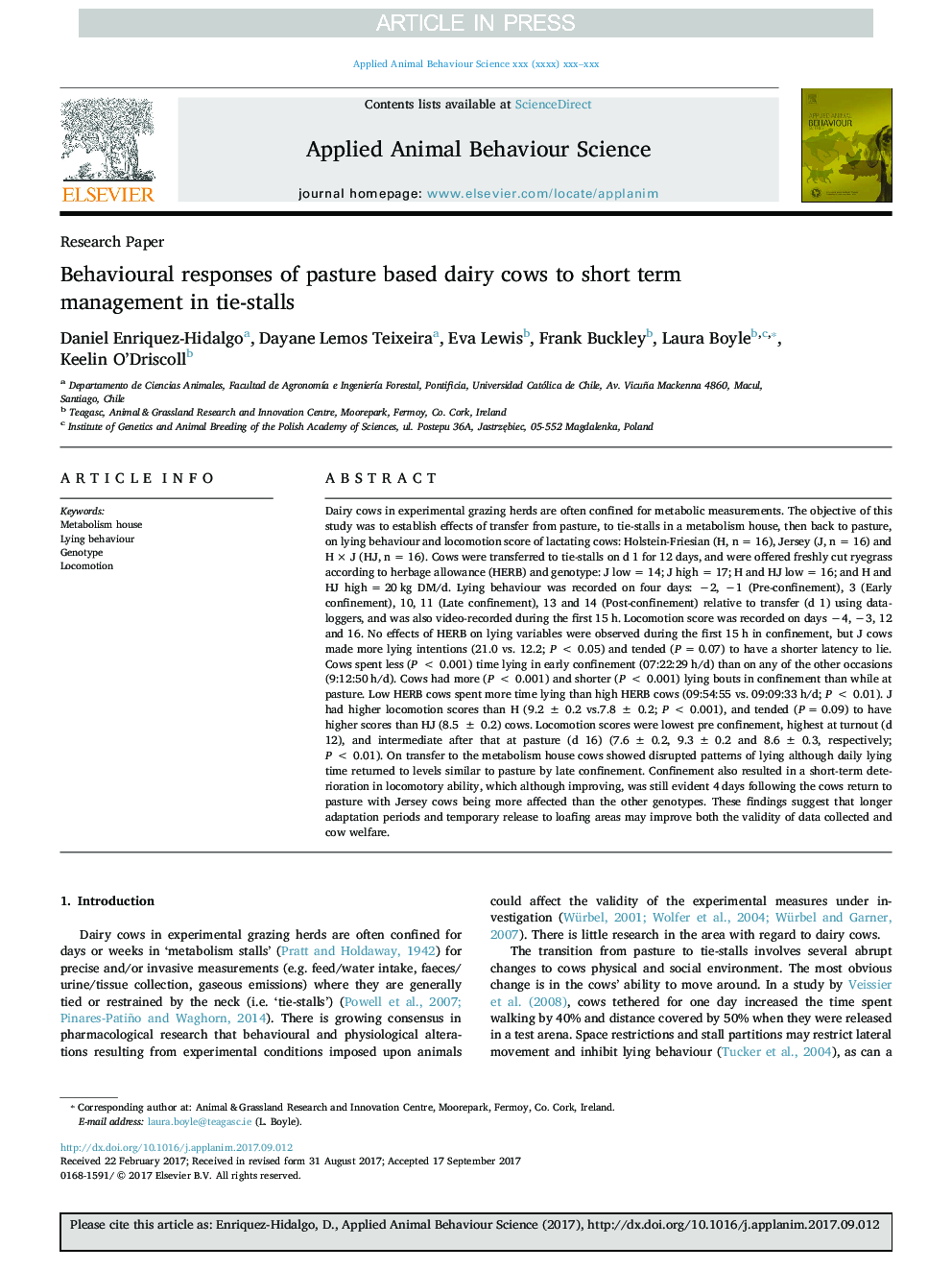| Article ID | Journal | Published Year | Pages | File Type |
|---|---|---|---|---|
| 8882860 | Applied Animal Behaviour Science | 2018 | 8 Pages |
Abstract
Dairy cows in experimental grazing herds are often confined for metabolic measurements. The objective of this study was to establish effects of transfer from pasture, to tie-stalls in a metabolism house, then back to pasture, on lying behaviour and locomotion score of lactating cows: Holstein-Friesian (H, n = 16), Jersey (J, n = 16) and H Ã J (HJ, n = 16). Cows were transferred to tie-stalls on d 1 for 12 days, and were offered freshly cut ryegrass according to herbage allowance (HERB) and genotype: J low = 14; J high = 17; H and HJ low = 16; and H and HJ high = 20 kg DM/d. Lying behaviour was recorded on four days: â2, â1 (Pre-confinement), 3 (Early confinement), 10, 11 (Late confinement), 13 and 14 (Post-confinement) relative to transfer (d 1) using dataloggers, and was also video-recorded during the first 15 h. Locomotion score was recorded on days â4, â3, 12 and 16. No effects of HERB on lying variables were observed during the first 15 h in confinement, but J cows made more lying intentions (21.0 vs. 12.2; P < 0.05) and tended (P = 0.07) to have a shorter latency to lie. Cows spent less (P < 0.001) time lying in early confinement (07:22:29 h/d) than on any of the other occasions (9:12:50 h/d). Cows had more (P < 0.001) and shorter (P < 0.001) lying bouts in confinement than while at pasture. Low HERB cows spent more time lying than high HERB cows (09:54:55 vs. 09:09:33 h/d; P < 0.01). J had higher locomotion scores than H (9.2 ± 0.2 vs.7.8 ± 0.2; P < 0.001), and tended (P = 0.09) to have higher scores than HJ (8.5 ± 0.2) cows. Locomotion scores were lowest pre confinement, highest at turnout (d 12), and intermediate after that at pasture (d 16) (7.6 ± 0.2, 9.3 ± 0.2 and 8.6 ± 0.3, respectively; P < 0.01). On transfer to the metabolism house cows showed disrupted patterns of lying although daily lying time returned to levels similar to pasture by late confinement. Confinement also resulted in a short-term deterioration in locomotory ability, which although improving, was still evident 4 days following the cows return to pasture with Jersey cows being more affected than the other genotypes. These findings suggest that longer adaptation periods and temporary release to loafing areas may improve both the validity of data collected and cow welfare.
Keywords
Related Topics
Life Sciences
Agricultural and Biological Sciences
Animal Science and Zoology
Authors
Daniel Enriquez-Hidalgo, Dayane Lemos Teixeira, Eva Lewis, Frank Buckley, Laura Boyle, Keelin O'Driscoll,
